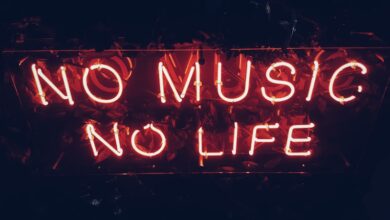Exploring the Role of Music in Transitional Justice and Healing Processes

Music has an extraordinary ability to transcend boundaries, connect people, and provide solace during times of transition and healing. In the realm of transitional justice, where societies strive to address past injustices and foster reconciliation, music plays a crucial role in facilitating these processes. This article delves into the transformative power of music in the context of transitional justice and highlights its profound impact on individuals and communities.

When confronted with the aftermath of conflict or repression, societies face immense challenges in rebuilding trust and harmony. Music acts as a universal language that can bridge divides between different groups by evoking emotions and fostering empathy. It serves as a powerful tool for storytelling, allowing victims and survivors to express their experiences and pain through melodies and lyrics that resonate deeply with others. This emotional connection creates a shared understanding and encourages dialogue, enabling the healing process to begin.

Moreover, music possesses the unique ability to evoke memories and trigger emotions. For individuals who have endured trauma, music can serve as a cathartic outlet, allowing them to confront and process their emotions in a safe and non-threatening manner. As survivors listen to or participate in musical activities, they embark on a journey of self-reflection, finding solace, and discovering newfound strength. Through this process, music aids in restoring a sense of identity and agency, empowering individuals to reclaim their narratives and rebuild their lives.
In addition to its individual impact, music fosters community healing by nurturing a collective sense of belonging and unity. Whether it’s through communal singing, dancing, or playing instruments, music brings people together, creating spaces where diverse voices can be heard and respected. By engaging in musical collaborations, communities can find common ground, strengthen social bonds, and promote understanding and empathy, which are vital elements for sustainable peace and reconciliation.
Music has an awe-inspiring role within transitional justice and healing processes. Its ability to forge connections, heal wounds, and promote understanding is a testament to its transformative power. By harnessing the universal language of music, societies can embark on a journey of reconciliation, where empathy and dialogue flourish, enabling individuals and communities to find healing, justice, and ultimately, a shared future.
Harmonizing Hearts: How Music Serves as a Catalyst for Healing and Justice
Introduction:
Have you ever experienced the transformative power of music? Beyond its ability to captivate our senses, music has an exceptional capacity to heal wounds and foster justice. Through its harmonious melodies and soul-stirring rhythms, music becomes a catalyst for connecting hearts, bridging divides, and inspiring positive change. In this article, we delve into the profound impact of music as it intertwines with healing and justice.
The Healing Power of Music:
Music possesses an innate ability to touch our souls, transcending language barriers and cultural differences. It has long been recognized as a therapeutic tool, offering solace and comfort to those in pain. Whether soothing melodies that calm anxious minds or uplifting beats that ignite joy, music holds the power to alleviate emotional distress, reduce stress levels, and promote overall well-being. Studies have shown that listening to music can even lower blood pressure and enhance the body’s natural healing processes, making it a valuable ally in the journey towards physical and mental wellness.
Music as a Bridge for Understanding:
In a world often divided by prejudices and conflicts, music serves as a universal language that unites people from diverse backgrounds. It acts as a bridge, fostering empathy, compassion, and understanding. When we listen to music, we are transported to different cultures and experiences, gaining insights into perspectives different from our own. By embracing the beauty of various musical traditions, we cultivate respect for diversity and celebrate the shared humanity that binds us together.
Music as a Call for Justice:
Throughout history, music has played a crucial role in advocating for social justice and driving societal change. From protest songs during the civil rights movement to anthems of freedom and equality, musicians have used their voices to speak out against injustice and oppression. Music amplifies the marginalized voices, ignites revolutions of thought, and empowers communities to demand fairness and equity. It possesses an unparalleled ability to inspire collective action, reminding us of the power we hold when we come together under a common cause.
Conclusion:
As we immerse ourselves in the enchanting melodies that resonate within our hearts, let us recognize the immense potential of music as a catalyst for healing and justice. It holds the remarkable ability to transcend boundaries, bring people together, and instigate positive change. Whether through its therapeutic benefits or its role in promoting understanding and advocating for justice, music continues to harmonize hearts worldwide, bridging divides and fostering a more compassionate and just society. So, let us join hands and embrace the transformative power of music in our lives.
Soundscapes of Restoration: Unveiling the Transformative Power of Music in Transitional Justice
Introduction:
Can music truly heal the wounds of a nation and foster peace and reconciliation? In the realm of transitional justice, an emerging field aiming to address the atrocities of the past and pave the way for a harmonious future, the transformative power of music has been increasingly acknowledged. This article explores the profound impact of soundscapes on the process of restoration, shedding light on how music transcends language barriers, elicits emotions, and creates spaces for dialogue and understanding.
The Healing Harmony:
In the aftermath of conflicts or oppressive regimes, societies are often fragmented, burdened with trauma and deep divisions. However, music possesses a unique ability to bridge these gaps, allowing individuals from diverse backgrounds to find solace in shared experiences. Just as a symphony orchestrates different instruments into a harmonious whole, music brings people together, igniting a sense of unity and common purpose.
Mirrors of Memory:
Music serves as a powerful vessel that carries memories, invoking emotions and triggering recollections. It acts as a mirror reflecting the collective experiences of a society, enabling individuals to confront their painful pasts and begin the healing process. By intertwining melodies, rhythms, and lyrics with historical narratives, music provides a medium through which stories can be told, heard, and understood, fostering empathy and facilitating the acknowledgment of past wrongs.
Beyond Words:
Unlike spoken language, music communicates directly with the soul. It bypasses the intellectual barriers that words often create, enabling individuals to connect on a deeper level. The universal language of music transcends cultural boundaries, allowing even those who speak different languages to find common ground. Through melodies and rhythms, music conveys emotions, aspirations, and hopes, giving voice to the silenced and marginalized.

Creating Dialogue:
Soundscapes composed of diverse musical traditions have the potential to create spaces for dialogue and reconciliation. When music resonates through the air, it invites individuals to listen, reflect, and engage with one another. It opens avenues for conversation, breaking down barriers and fostering understanding. Through collaborative musical endeavors, communities can rediscover their shared humanity and build bridges toward a more inclusive future.
Conclusion:
In the realm of transitional justice, where the wounds of the past run deep, the transformative power of music shines brightly. With its ability to heal, reflect, transcend language, and foster dialogue, music serves as a potent force in the restoration of societies. The soundscapes of restoration hold the promise of unity, understanding, and reconciliation, paving the way for a better tomorrow. Let the melodies of hope guide us on this transformative journey.
Resonating Rhythms: The Therapeutic Potential of Music in Post-Conflict Healing
Have you ever wondered about the remarkable power of music? It has an extraordinary ability to touch our souls, evoke emotions, and bring people together. But did you know that music also holds immense therapeutic potential, particularly in the process of post-conflict healing? In this article, we’ll explore how the resonating rhythms of music can help individuals and communities mend their wounds and foster reconciliation.
In the aftermath of conflict, communities are often left shattered, with deep emotional scars that may seem insurmountable. Traditional methods of healing and therapy may fall short in addressing these profound traumas. This is where music steps in, offering a unique and universal language that transcends barriers and speaks directly to our hearts.

Music therapy, a discipline that utilizes the power of music to promote healing and well-being, has gained recognition as an effective approach in post-conflict settings. Through engaging in musical activities such as singing, drumming, or playing instruments, individuals can express their emotions, release pent-up tensions, and find solace amidst chaos.
The therapeutic benefits of music extend beyond individual healing. When embraced collectively, music becomes a powerful tool for community building and reconciliation. Imagine a group of people from opposing sides of a conflict coming together to create harmonious melodies. The act of making music together fosters a sense of connection and shared humanity, breaking down walls of mistrust and animosity.

Furthermore, music possesses a unique ability to preserve cultural heritage and promote intergenerational dialogue. Through traditional songs and rhythms, communities can reclaim their identities, pass down stories and traditions, and rebuild a sense of belonging.
Scientific research has also shed light on the neurological impact of music on our brains. Listening to or participating in music activates various regions responsible for emotion regulation, memory, and social bonding. These neurochemical changes not only enhance mood and well-being but also facilitate the rewiring of neural pathways associated with trauma and post-conflict stress.
Music holds incredible potential as a therapeutic tool in post-conflict healing. Its ability to transcend boundaries, promote emotional expression, foster community bonding, and engage our neurological systems makes it an invaluable resource for individuals and communities seeking healing and reconciliation. So let the resonating rhythms of music weave their magic, bringing solace, unity, and hope to those on the journey of healing after conflict.
From Discord to Harmony: Music’s Integral Role in Rebuilding Communities after Conflict
Introduction:
Can music bring people together and heal the wounds of a divided community? The answer is a resounding yes. When faced with the aftermath of conflict, music emerges as a powerful tool that transcends language barriers, cultural differences, and historical grievances. It has the innate ability to inspire, uplift, and foster unity among individuals. In this article, we explore how music plays an integral role in rebuilding communities after conflict.
The Healing Power of Music:
Music possesses a unique quality that resonates deep within our souls. It has the power to evoke emotions, alter moods, and create a sense of belonging. After conflict, when trust and peace are shattered, music acts as a binding force that helps mend the broken pieces of society. It provides solace, comforts the afflicted, and instills hope for a better future.
Music as an Expression of Identity:
In war-torn communities, where identities may be fragmented, music serves as a vessel for personal and collective expression. Through melodies, rhythms, and lyrics, individuals can reclaim their cultural heritage, preserving traditions that might have otherwise been lost. By embracing their musical roots, communities find strength in their shared history, fostering a sense of pride and unity.
Bridging Divides and Fostering Dialogue:
Music has an unparalleled ability to bridge divides and facilitate dialogue between conflicting parties. It cuts through political rhetoric and allows people to connect on a human level. Whether through collaborative performances or music education initiatives, it encourages communication, understanding, and empathy. By sharing harmonies, communities can discover common ground, paving the way for reconciliation and peaceful coexistence.
Music for Social Change:
Beyond its immediate healing effects, music also becomes a catalyst for social change. Lyrics can carry powerful messages of peace, justice, and empowerment, inspiring individuals to take action and advocate for positive transformation. Artists and musicians, acting as agents of change, use their platforms to raise awareness, amplify marginalized voices, and challenge the status quo. Through music, communities find the strength to address underlying issues that led to conflicts in the first place.
Conclusion:
In the aftermath of conflict, rebuilding communities requires more than just physical reconstruction. It demands the mending of broken spirits, the restoration of trust, and the establishment of a shared vision for a harmonious future. Music acts as a powerful instrument in this process, offering solace, fostering dialogue, and inspiring positive change. By embracing music’s integral role, communities can embark on a journey from discord to harmony, shaping a brighter tomorrow together.




